Sikorsky Product History
Sikorsky S-59
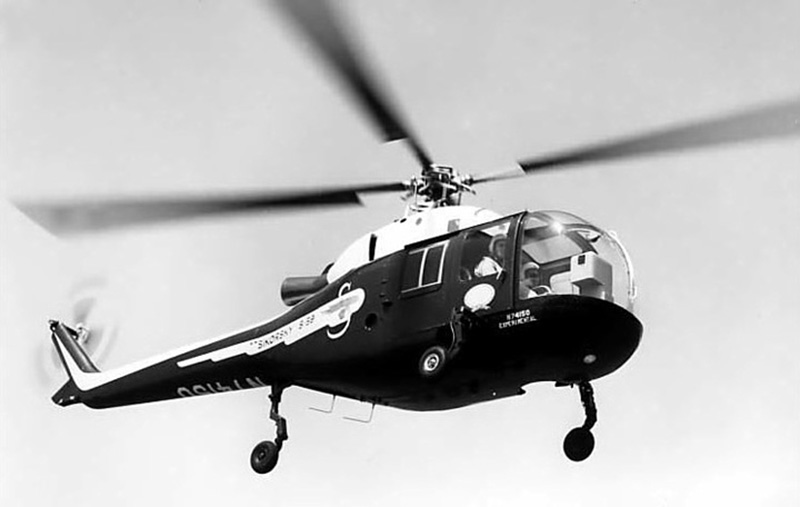
Background
The Sikorsky S-59 was a highly modified S-52-2 helicopter. Modifications included the installation of a 400 hp Continental/Turbomeca, Artouste II, XT51-T-3 gas turbine engine, a fully articulated 4-bladed main rotor, and a 3-bladed tail rotor. Additional modifications included, a modified main gearbox, strengthened fuselage, incorporation of retractable, conventional configuration (tail wheel), landing gear, and updated electronics. Sikorsky modified a Company owned S-52-2 prototype and modified 2 U.S Army YH-18 helicopters to the S-59 configuration under a Government contract. The U.S. Army designation for the S-59 was XH-39. One of the U. S. Army XH-39 (Army Serial No. 49-2890) helicopters was a further modification of the YH-18A (S-52-5), which was the first installation of a gas turbine engine in a helicopter. The other was a modified YH-18A (S-52-2) which was a non-flight model used for static testing.
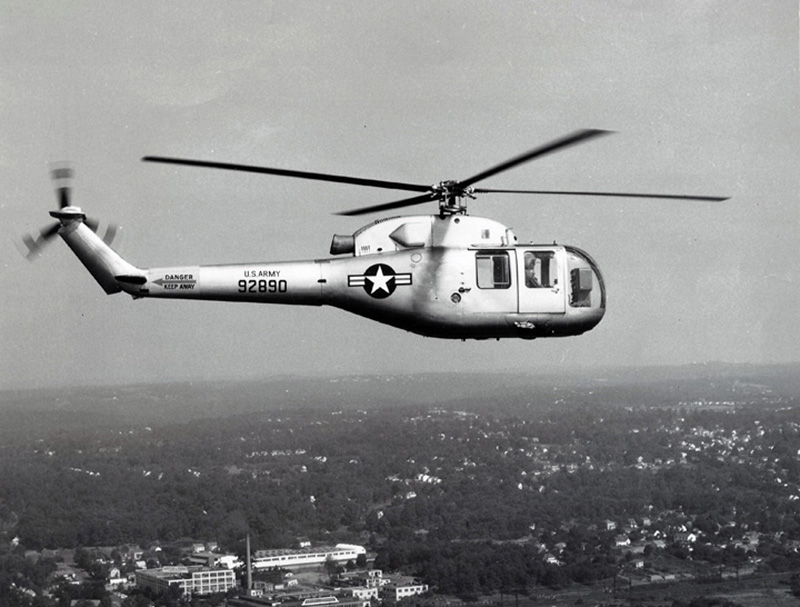
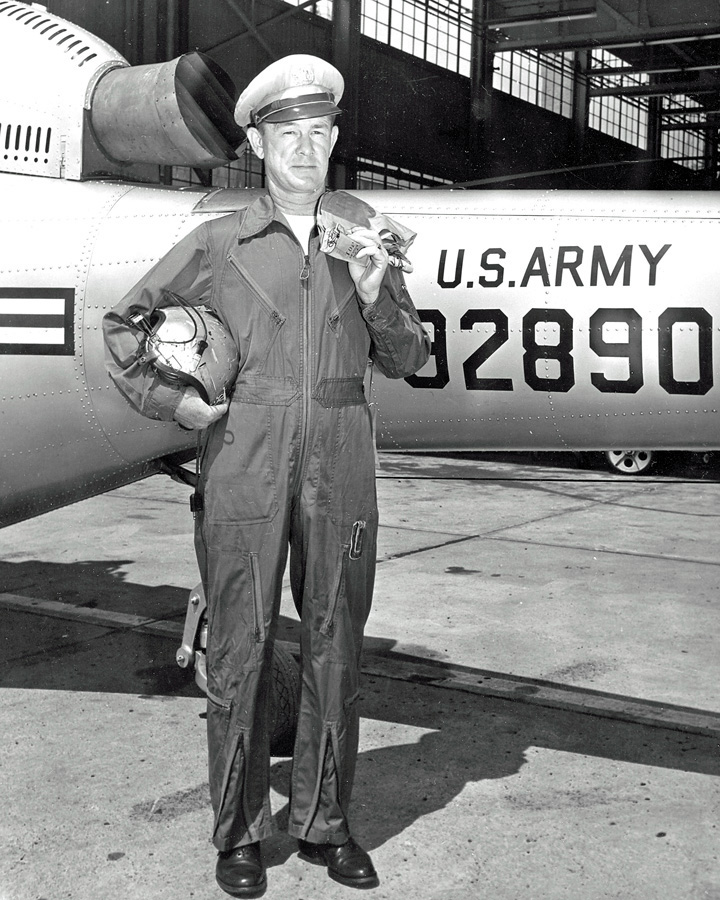
S-59 Development Timeline
First Flight
World Helicopter Speed Record Set
World Helicopter Altitude Record Set
Configuration Features
The Sikorsky S-59 design featured a “Quick Change Unit (QCU)” consisting of the engine, main gearbox, and main rotor head. It could be changed in 2 hours.
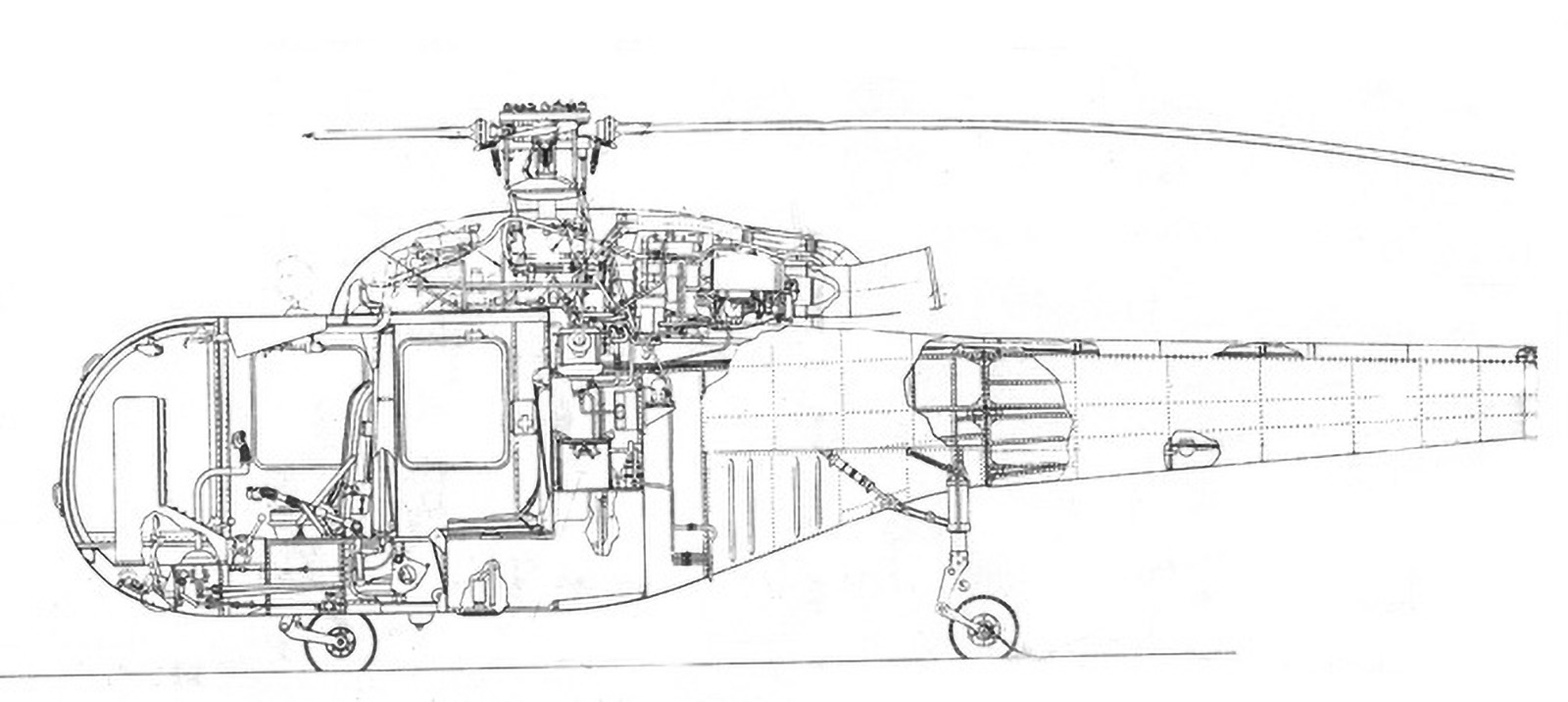
Main Rotor Assembly
A 4 blade fully articulated main rotor head was installed on the S-59 helicopter. The rotor diameter was 35 feet controlled by a hydraulic servo system.
Engine
A Continental/Turbomeca, Artouste II, XT51-T-3 fixed shaft gas turbine engine was installed. This engine was a French Turbomeca designed engine manufactured in the United States under license by Continental Aviation and Engineering Corporation (CAE) in Detroit, Michigan. The engine with accessories weighed less than 250 lbs. and produced 400 shp. The engine was a fixed shaft design unlike any other turbine engine installed in Sikorsky helicopters. All succeeding turbine engines used were of the free power turbine design meaning that the rotor started turning on engine start unless restrained by a rotor brake. On the-S-59, the engine was started and when stable was connected to the main transmission with a hydro-mechanical clutch.
Main Rotor Blades
The all metal main rotor blades are made in two sections. The leading edge (spar)was made of a hollow one-piece extrusion of 61 ST aluminum alloy. The rear section (pockets) was made from thin dural sheets attached to the spar with rivets and cement held in contour by rib formers. The blades had a NACA 0012 air foil with constant cord and twisted 8 degrees. The all metal construction resulted in an extremely smooth surface and high efficiency due to a minimum of profile drag
Tail Rotor
The all metal tail rotor blades were of a similar construction to the main rotor blades. The blades had a NACA 0012 air foil The 3 blade tail rotor was fully articulated.
Fuselage
The fuselage was constructed of 3 sections:
Cabin and center section was monocoque, the tail cone and its mount was monocoque, and the main rotor pylon structure which was steel tube. The cabin section was the only reused component from the S-52 and that was heavily modified.
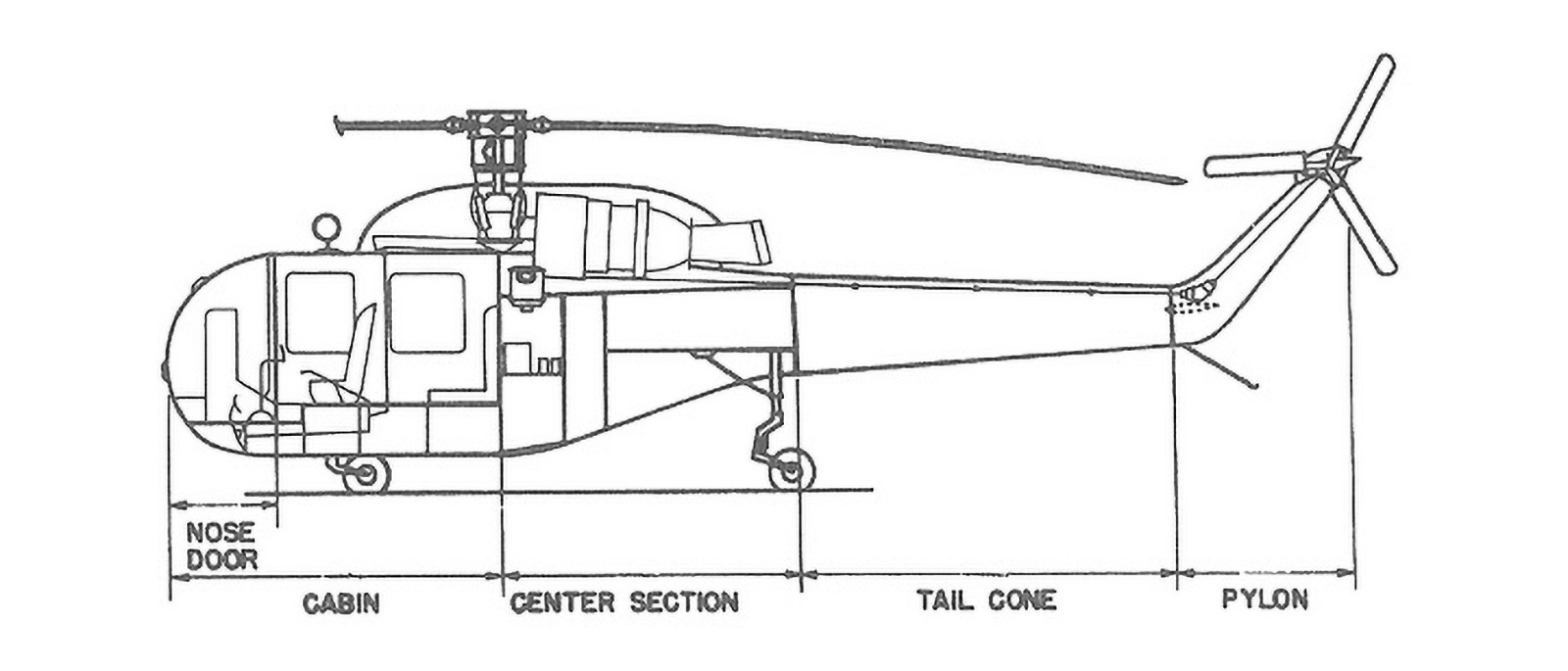
General Arrangement Drawing
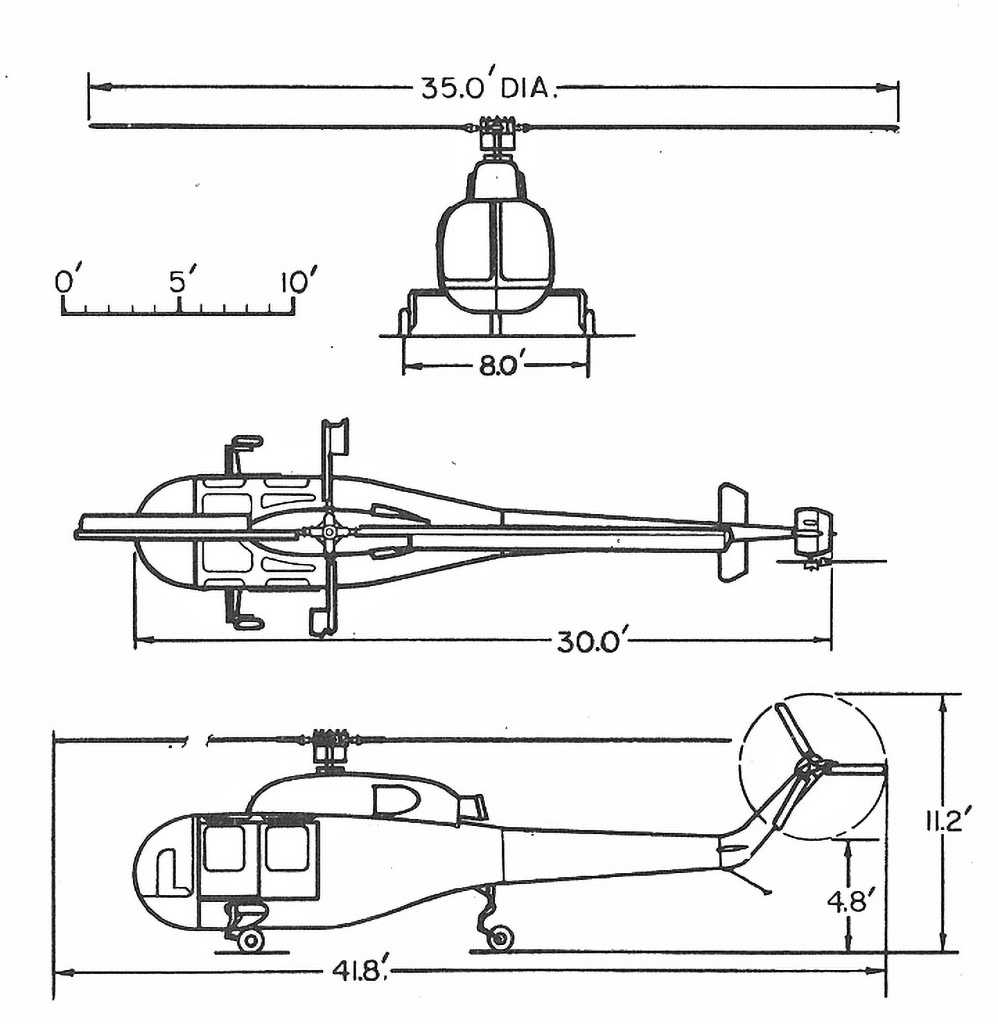
Mission Systems
The S-59(XH-39) was a single gas turbine, single main rotor type helicopter with an anti-torque tail rotor. The 4 main rotor blades were interchangeable as were the 3 tail rotor blades. All blades were of an all-metal construction. The engine was mounted horizontally above and aft of the cabin. The conventional type landing gear, two main and one tail wheel was fully retractable. The tail landing gear retracted forward and the main landing gear retracted inboard with the wheels exposed on the underside of the cabin. Litter patients were loaded through a large clam-shell type door in the cabin nose. Two large doors provided convenient entrance and loading of cargo into the cabin where ample space was provided for 3 passengers in seats or 2 litters and an attendant.
Two Mk8 Mod 2 bomb shackles each capable of carrying 500 pounds were provided. Provisions for a wire laying dispenser for field telephone connections were provided.
Standard instruments included a vertical gyro and gyro magnetic compass. This instrumentation made the XH-39 capable of blind flying (IFR).
Heating and ventilating systems were provided in the cabin. Photos show that this included flying with the door open.
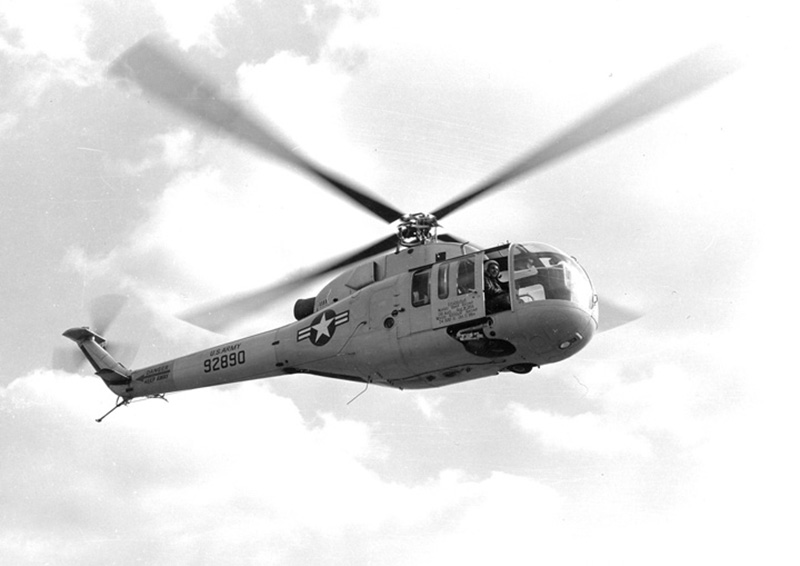
Quickly detachable components, (a Quick Change Unit (QCU)” consisting of engine, main gearbox, and main rotor head) permitted quick overhauls by interchanging component parts and the XH-39 was air transportability in the C-82, C-119, and C-124 aircraft
General Characteristics and Performance
Performance Standard Day at Sea Level | |
|---|---|
Maximum Speed (Vne) | 136 kts / 251 km/hr
|
Range | 243 nm / 451 km
|
Service Ceiling | 23,700 ft / 7,2234 m
|
Rate of Climb | 2,000 ft/min / 610 m/s
|
Absolute Hover Ceiling | 6,800 ft / 2,073 m
|
Weights | |
|---|---|
Maximum Takeoff Gross Weight | 3,361 lbs / 1,528 kg
|
Weight Empty | 2,105 lbs / 957 kg
|
Maximum Fuel Load | 918 lbs / 416.4 kg
|
General Data | |
|---|---|
Crew Seating Capacity | 2 |
Seating Capacity | 2 passengers |
Fuel Capacity | 135 US gal / 511 L
|
Powerplant Ratings Standard Day at Sea Level | |
|---|---|
Continental/Turbomeca Artouste II (XT-51-T-3)
| 400 hp / 298 kw
|
Aircraft Dimensions | |
|---|---|
Main Rotor Diameter (Blade Tip Circle) | 35’ 0” / 10.67 m
|
Tail Rotor Diameter (blade tip circle) | 3′ 2″ / .914 m
|
Fuselage Length | 30’ 0″ / 9.144 m
|
Fuselage Width | 5′ 0″ / 1.52 m
|
Length Overall (Including Rotors) | 41’ 9.5″ / 12.5 m
|
Height Overall | 9’ 7” / 2.74 m
|
Main Landing Gear Tread | 8′ 0″ / 2.44 m
|
Wheel Base
| 6′ 2″ / 1.83 m
|
Cabin Length | 7′ 7″ / 2.13 m
|
Cabin Width | 4′ 6″ / 1.22 m
|
Cabin Height | 5’ 0” / 1.52 m
|
Production History
S-59 (XH-39) production consisted of 3 helicopters, one S-59, N74150, was used for company demonstration flights and two XH-39 helicopters.
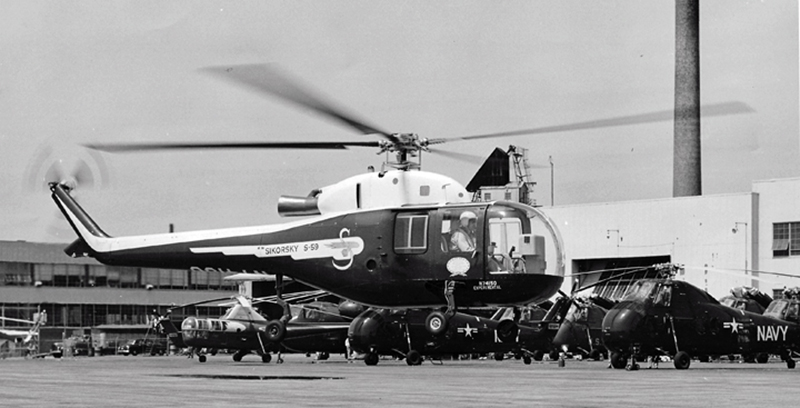
One XH-39, Army Serial No.49-2891 was a static test article which never flew. The second XH-39, Army Serial No. 49-2890 was the flight test helicopter. The XH-39 was in competition with the bell XH-40. The Army chose the XH-40 which became the UH-1, Huey. The Army continued to fly the XH-39 for a few years gaining extensive data on turbine powered helicopters.
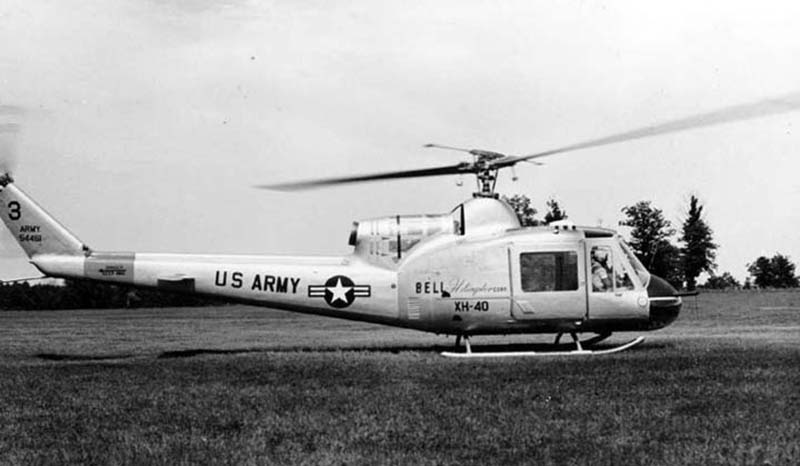
S-59 N74150 was restored and displayed at the World’s Fair in New York in 1964. It is now in the collection at the New England Air Museum, Windsor Locks, Connecticut.
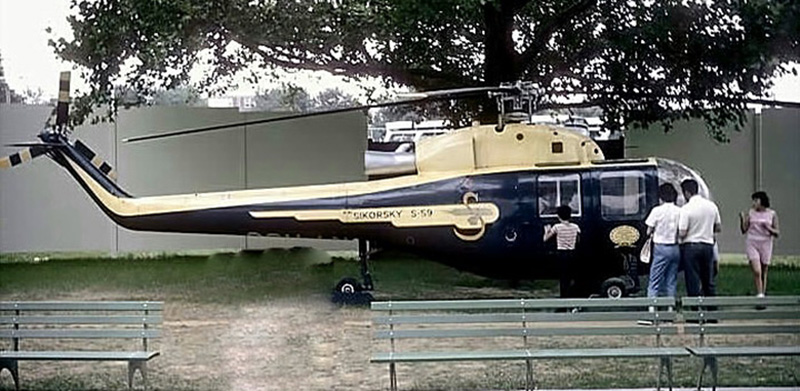
XH-39, Army Serial No. 42-2890, is in the collection of the U.S. Army aviation Museum at Fort Rucker, Alabama. The museum acquired this record setting helicopter in 1957. It was restored in 1986 by volunteers from the Sikorsky Support Services Incorporated (SSSI) Aircraft Maintenance Team at Fort Rucker.
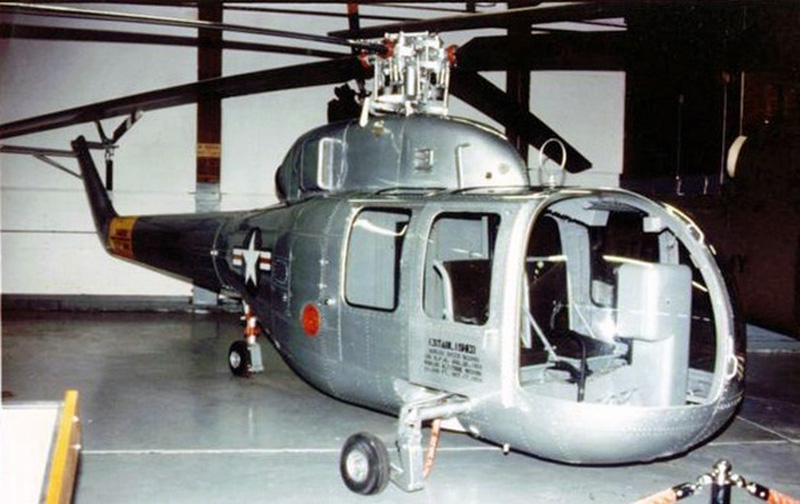
Additional Information
The National Archives video below from 1954 shows the Sikorsky XH-39 (Serial No. 92890) at the Sikorsky Plant in Bridgeport, Connecticut performing the following flight maneuvers:
- Hovering and extending, then retracting landing gear
- Take off and approach to landing and flying about twenty feet off ground
- Taking off and performing a loop
- Landing and taxiing
- by Vinny Devine
Related Articles
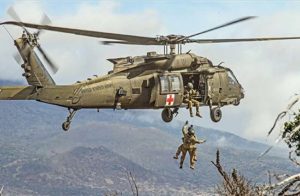
Sikorsky Lifts the Army
The U.S. Army saw the possibilities of the helicopter early in its development, thus beginning a relationship with Sikorsky Aircraft that continues to this day.
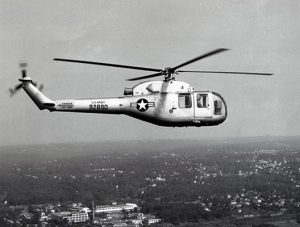
Sikorsky Aircraft in the 1960s
The decade of the 1960s gave birth to the era of Sikorsky turboshaft engine-powered helicopters.
